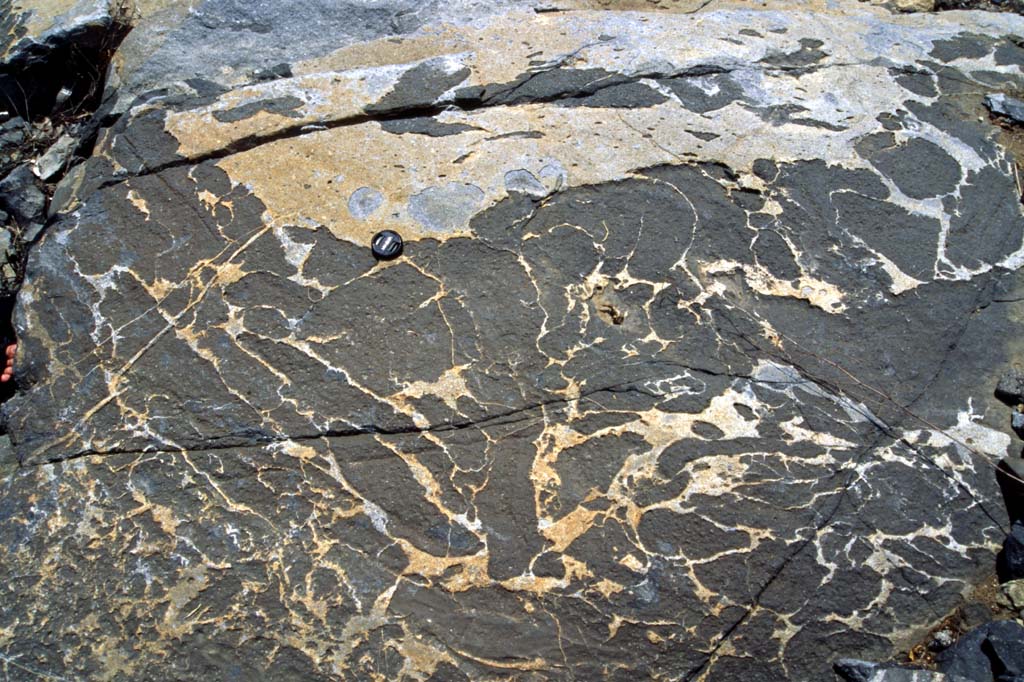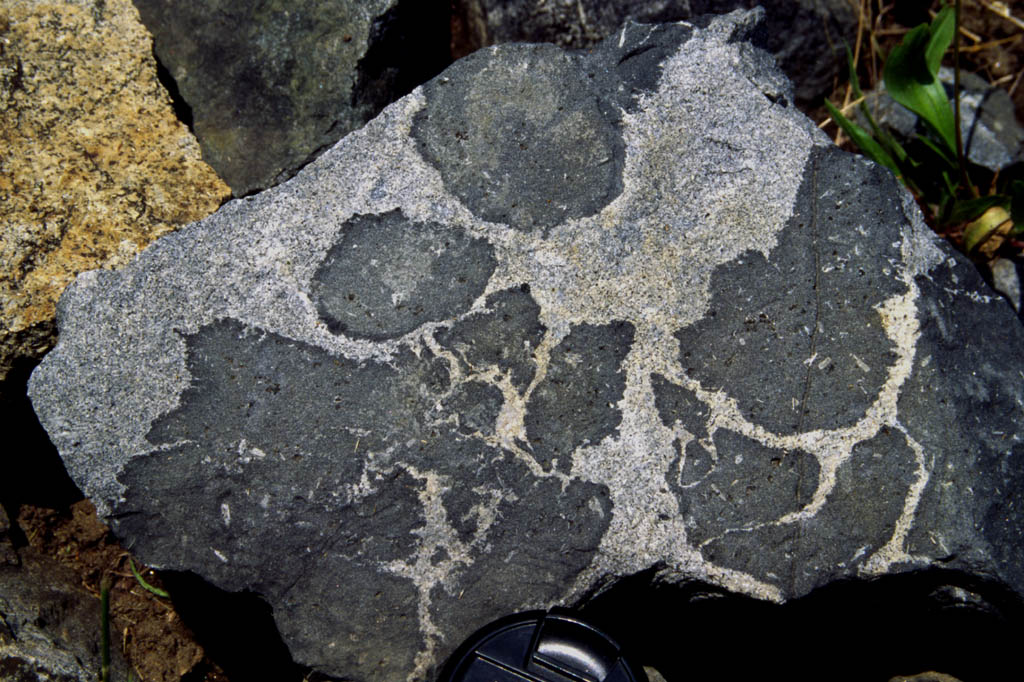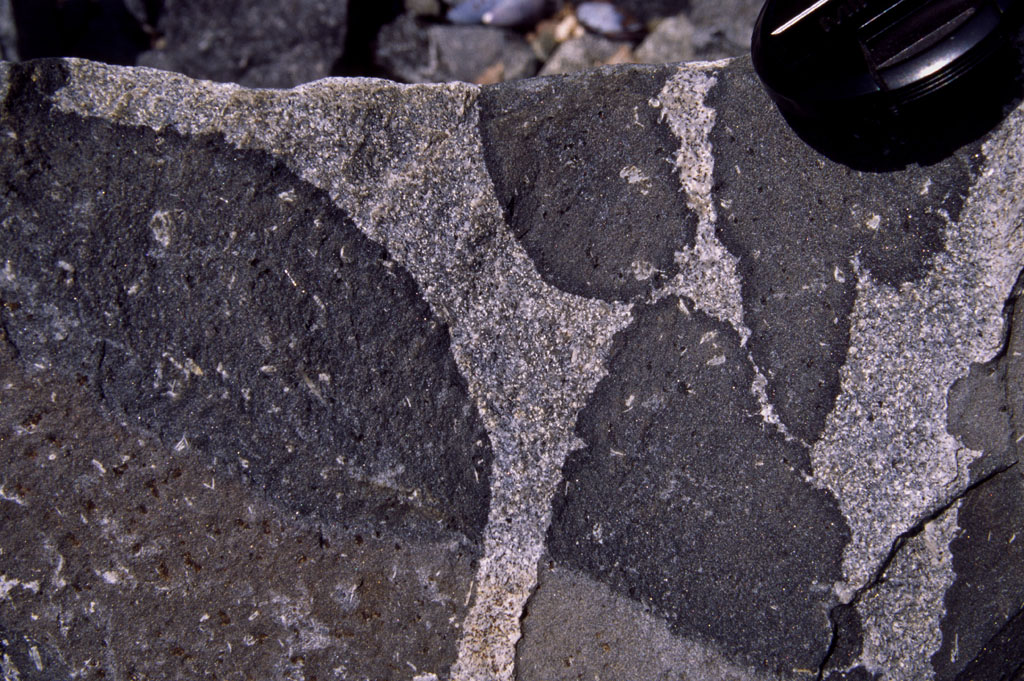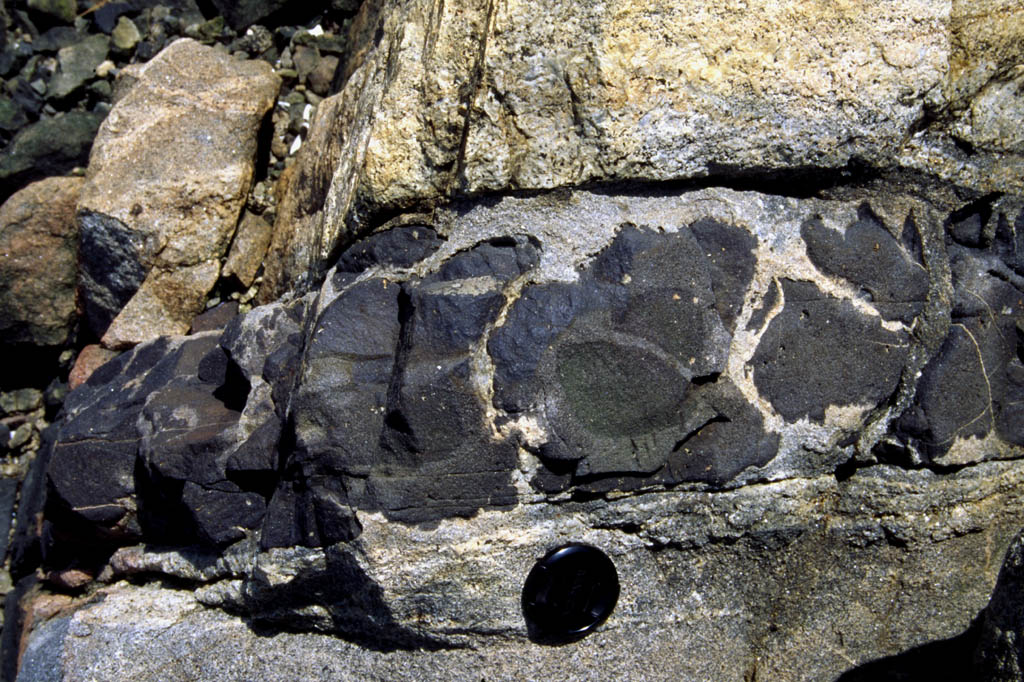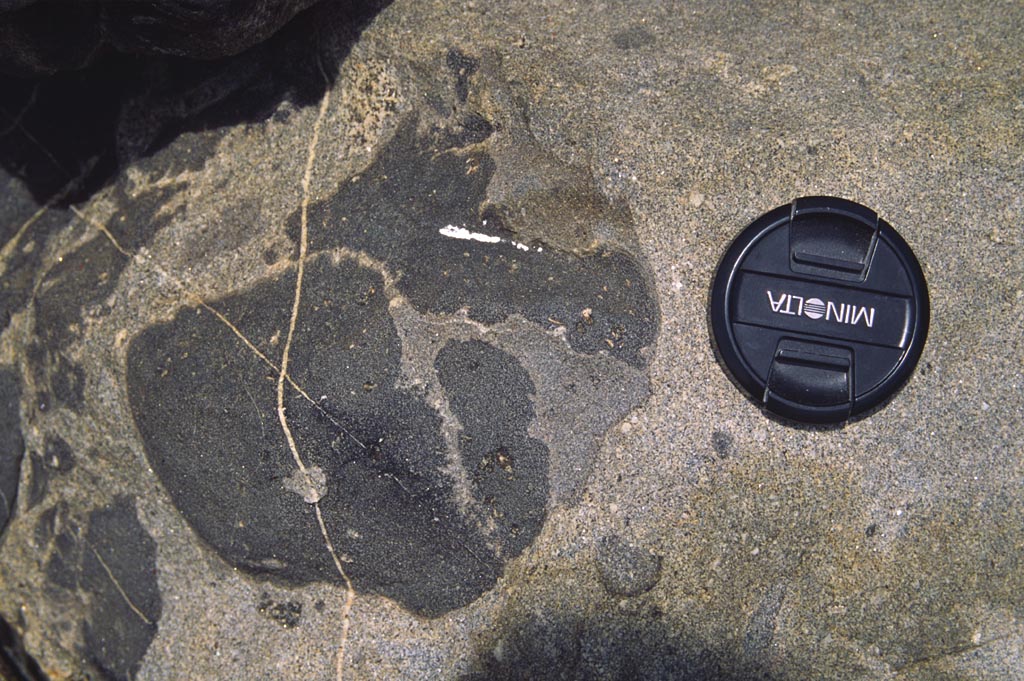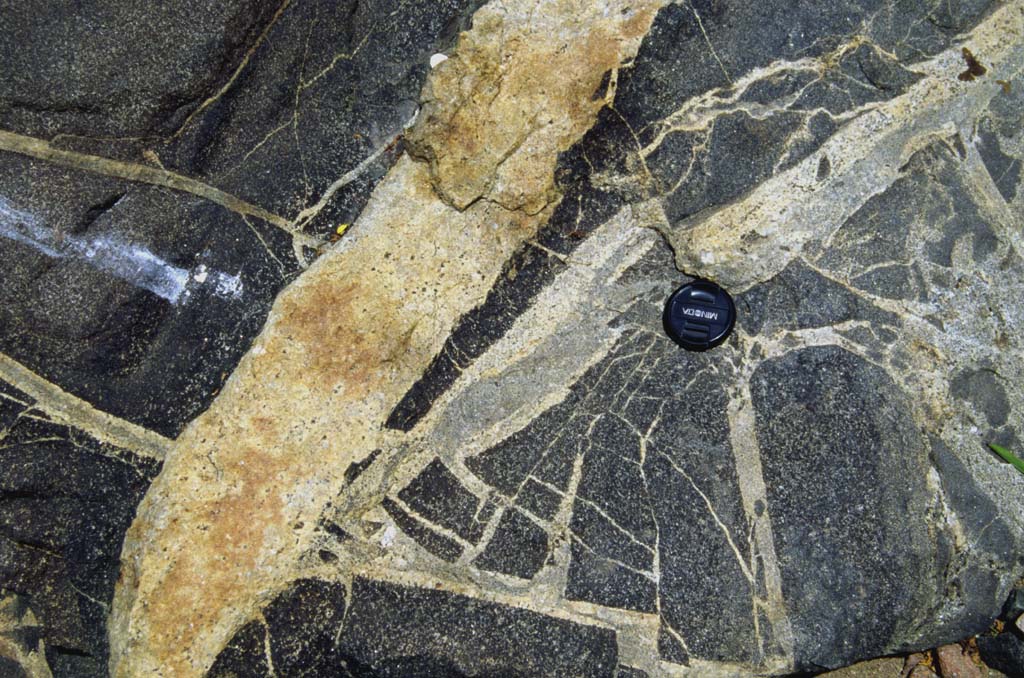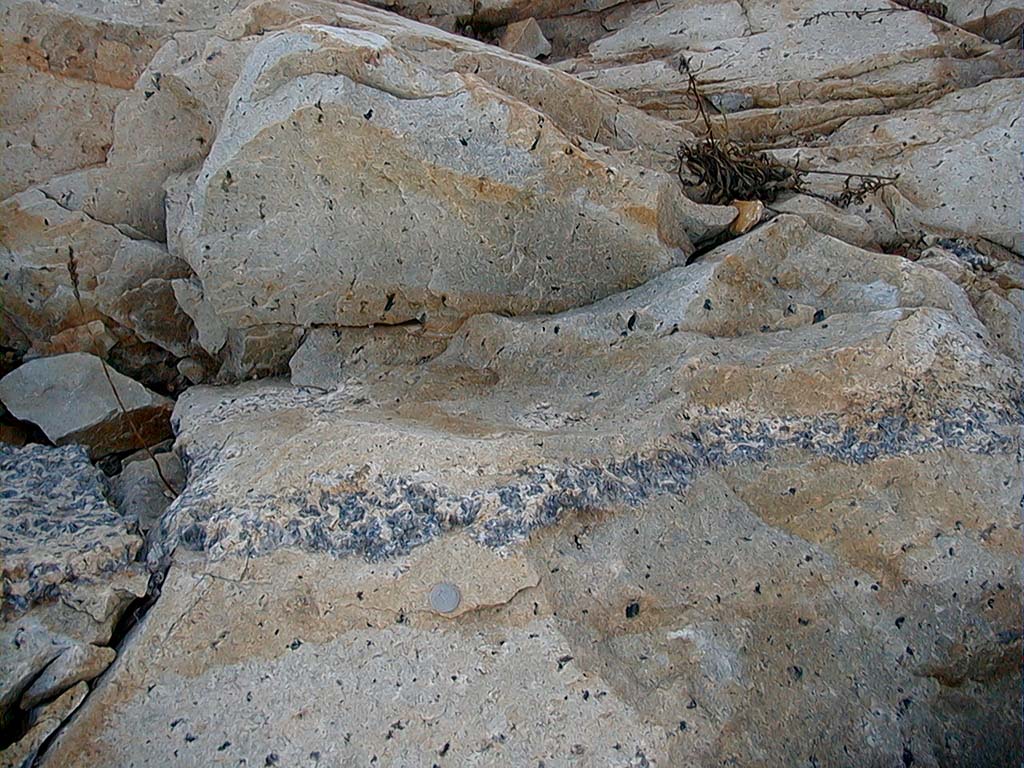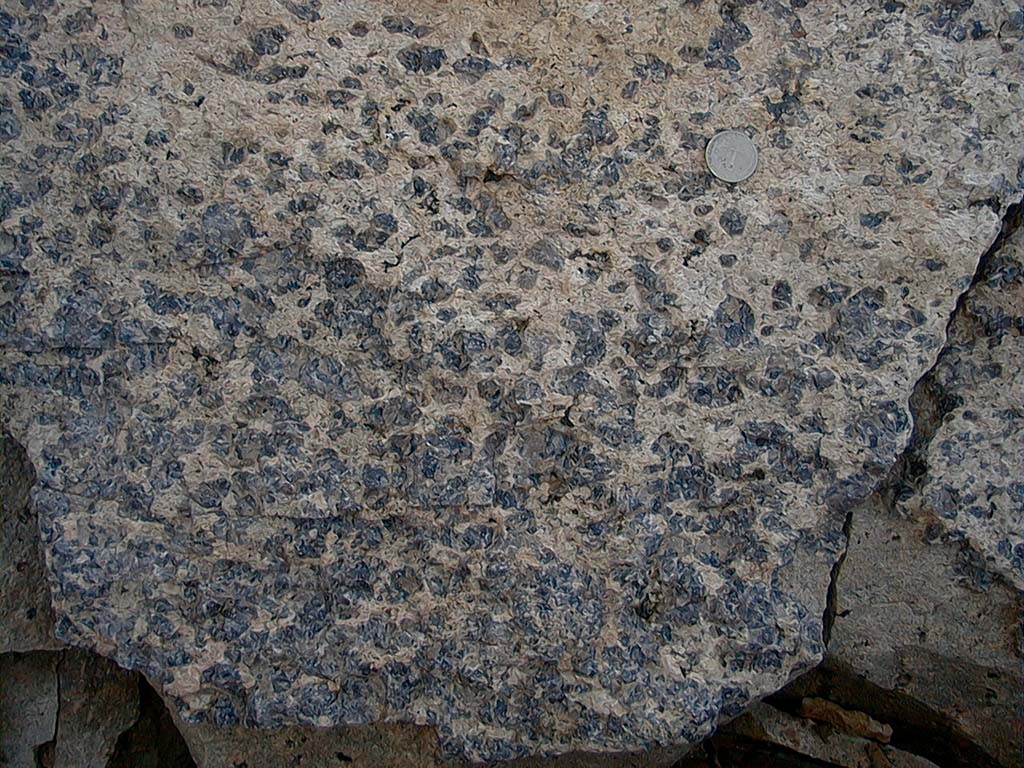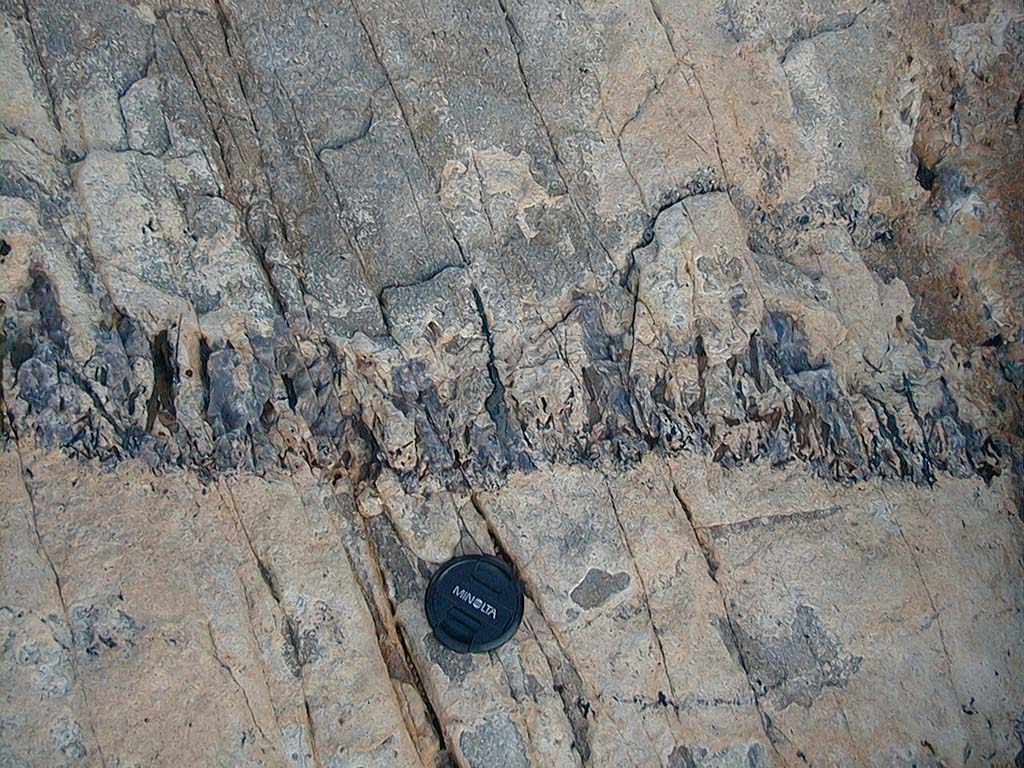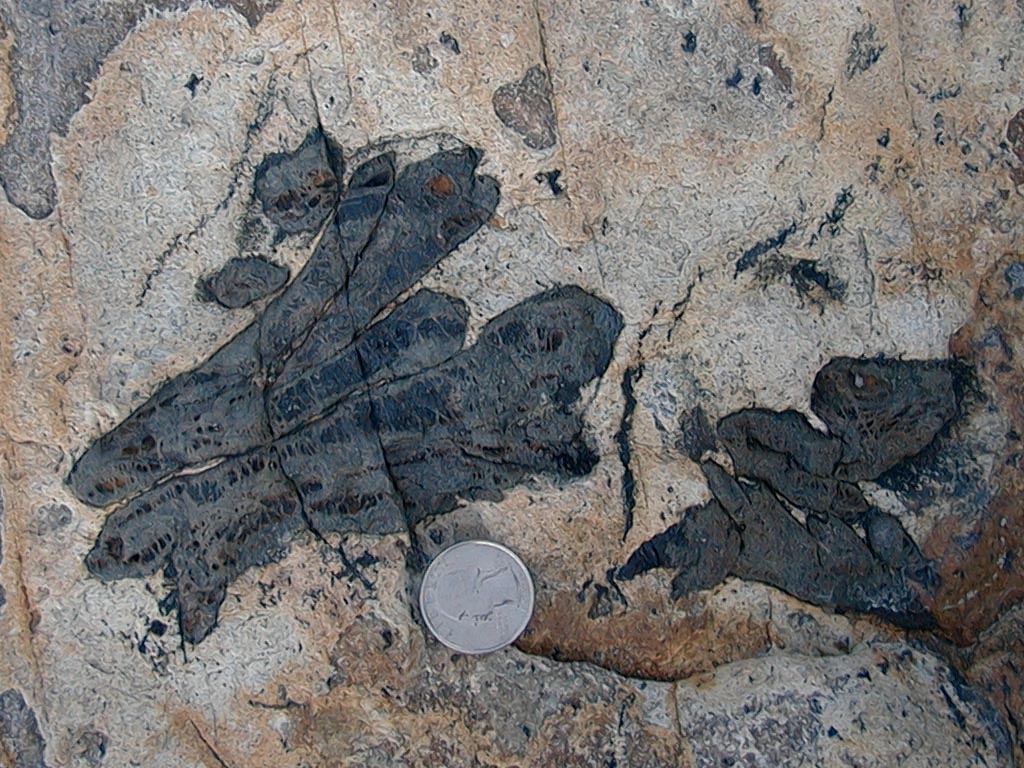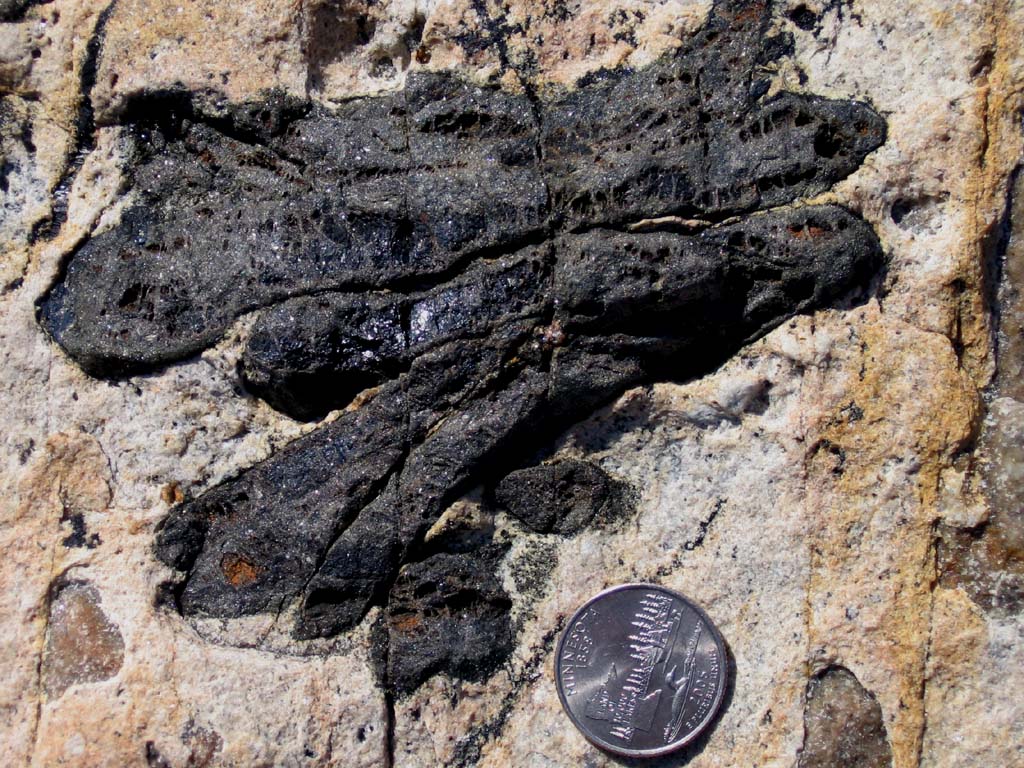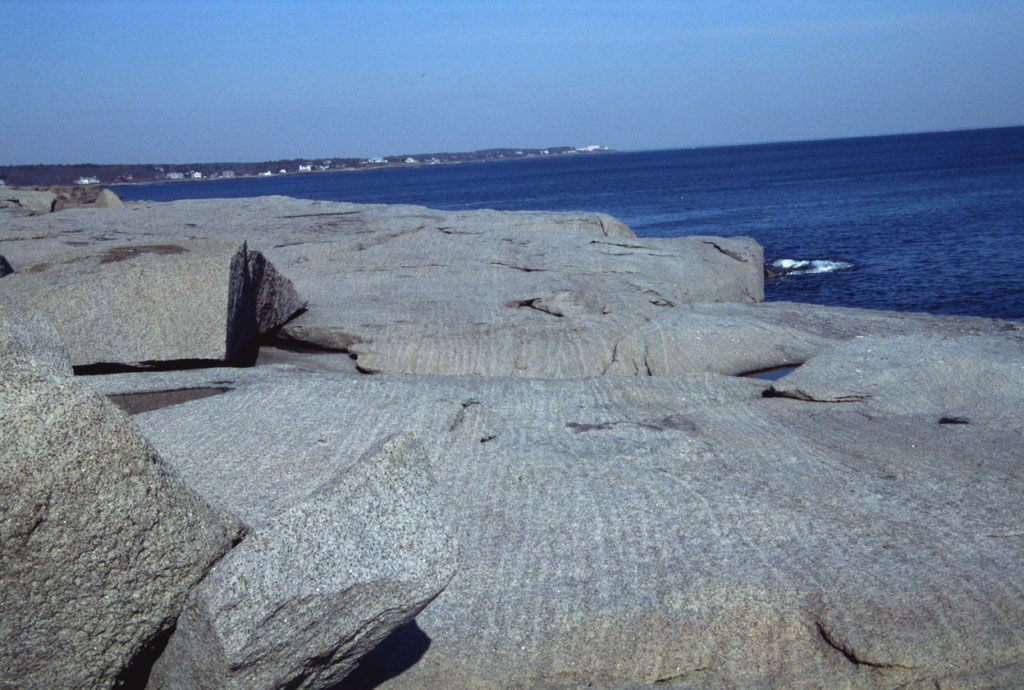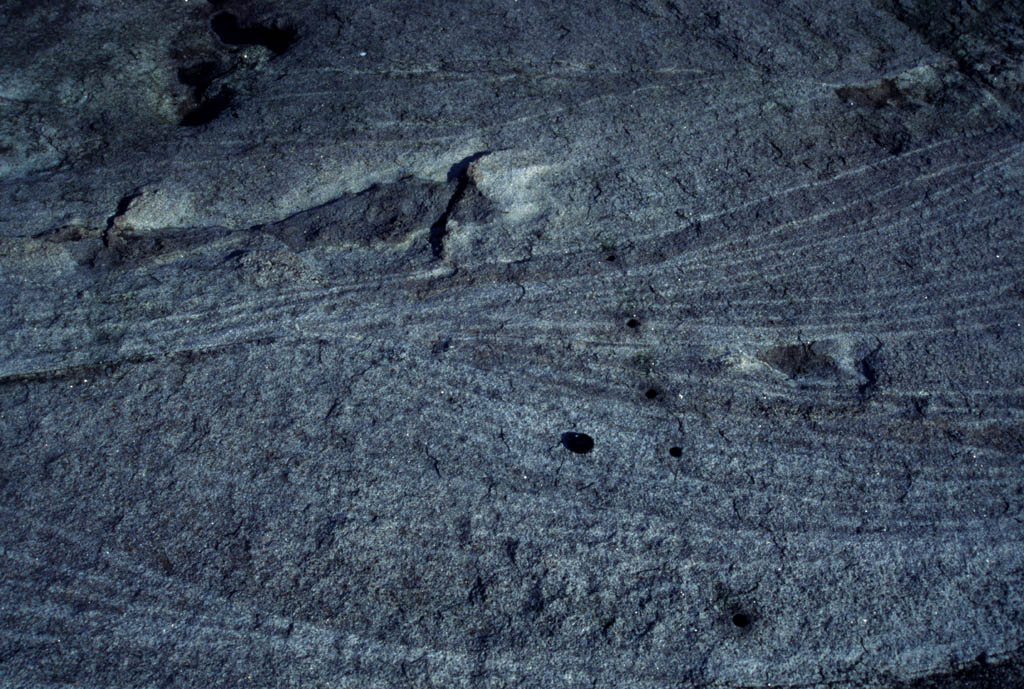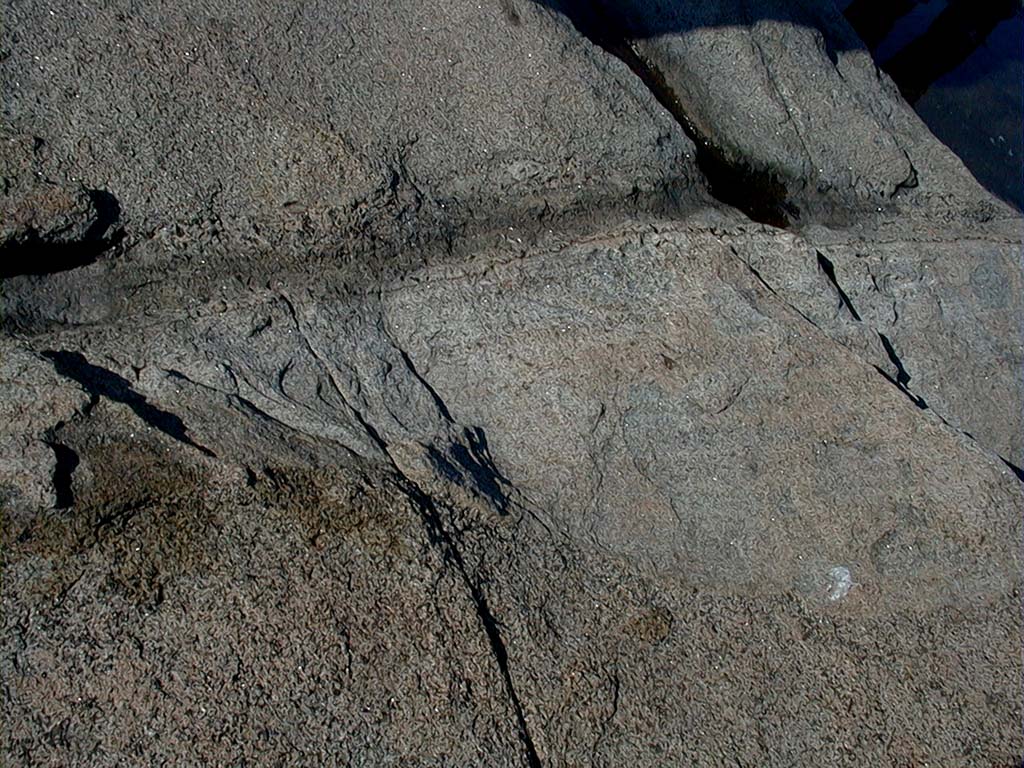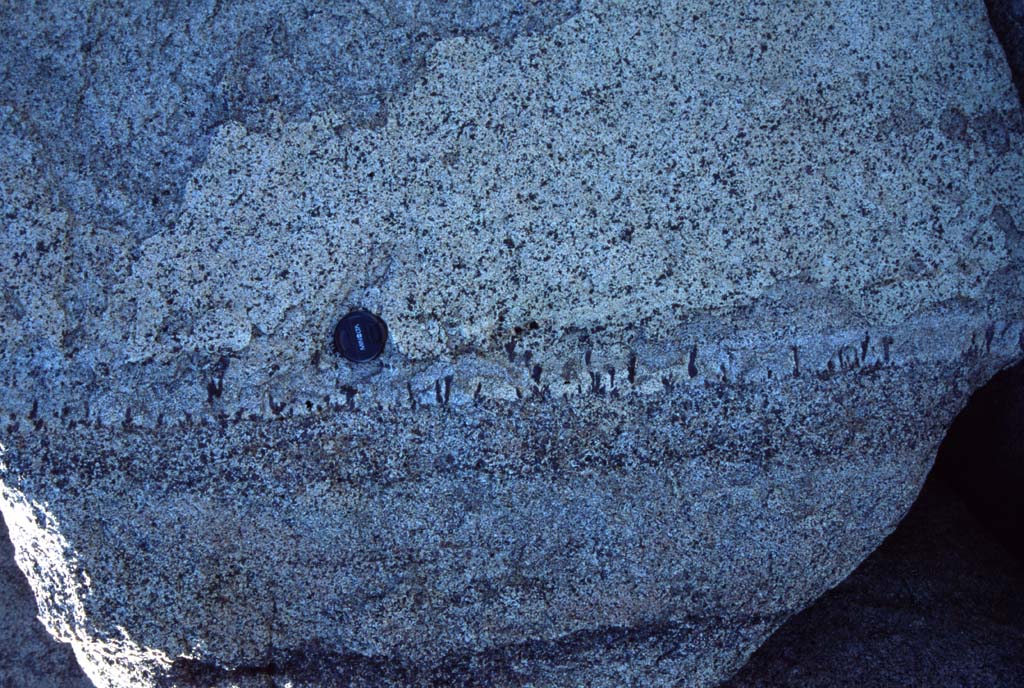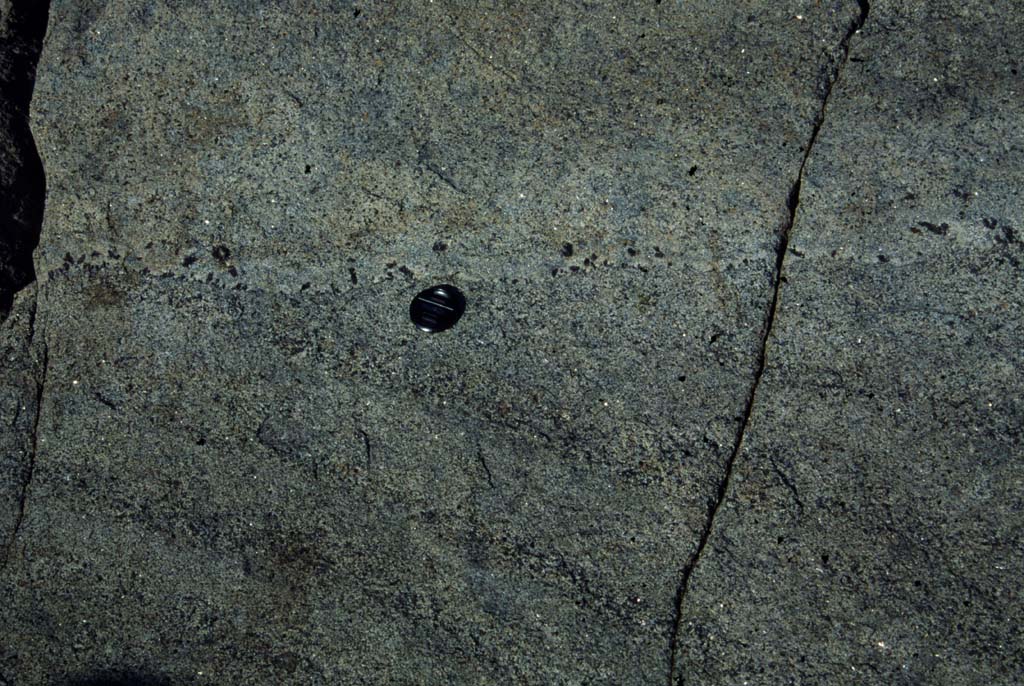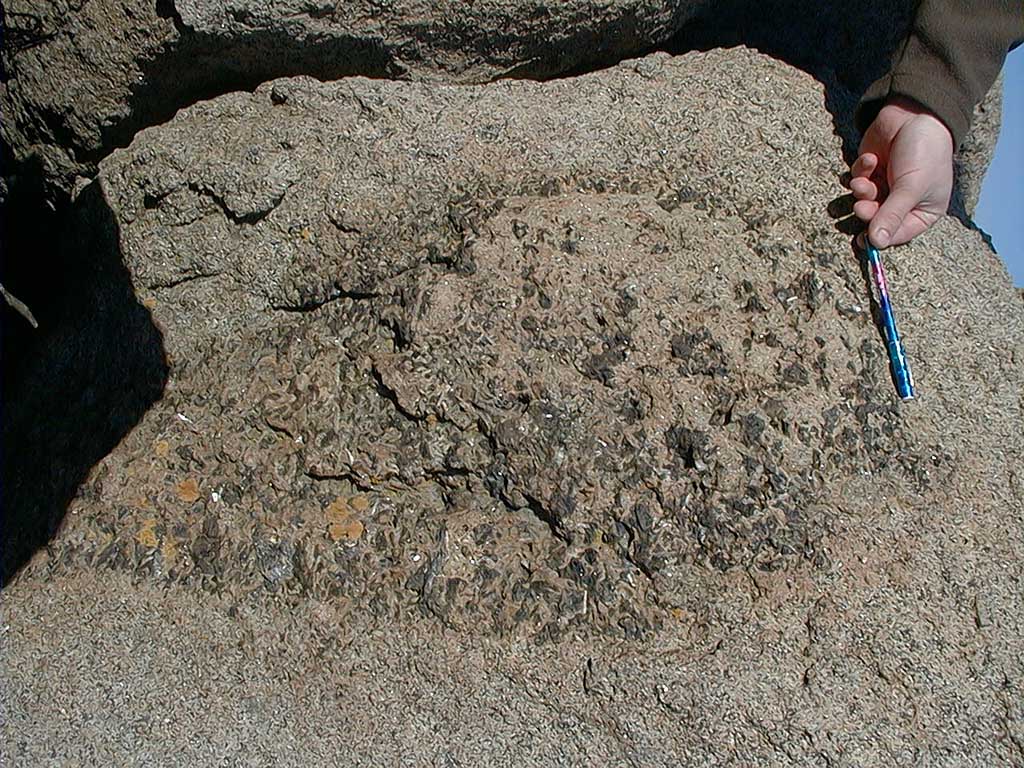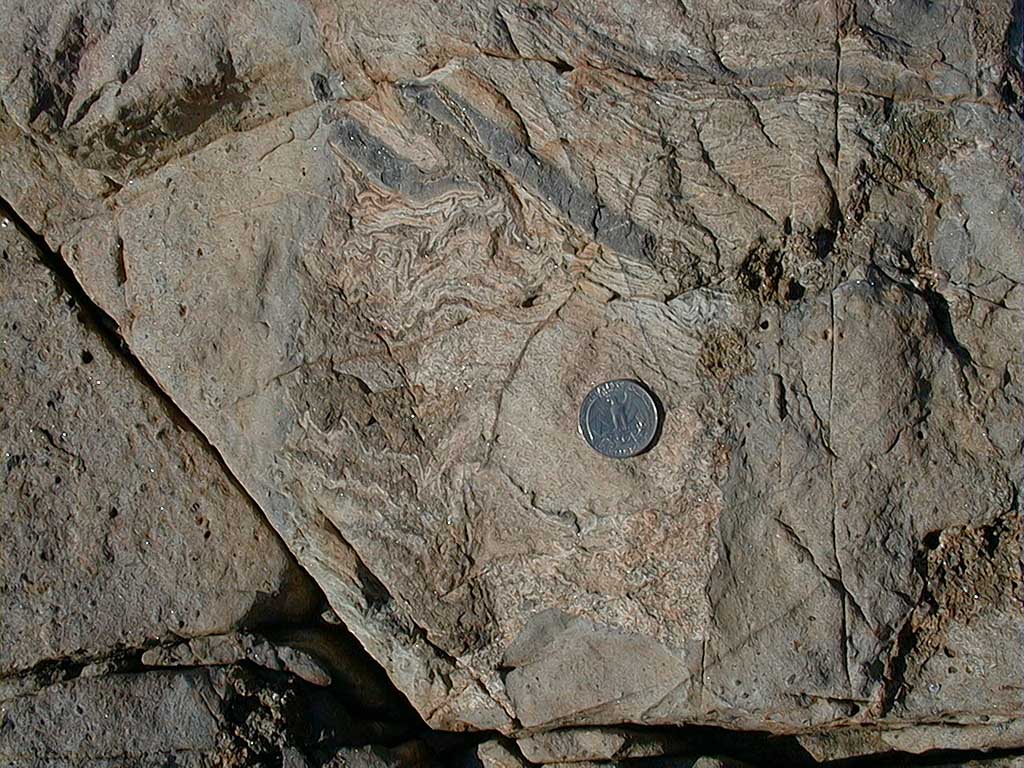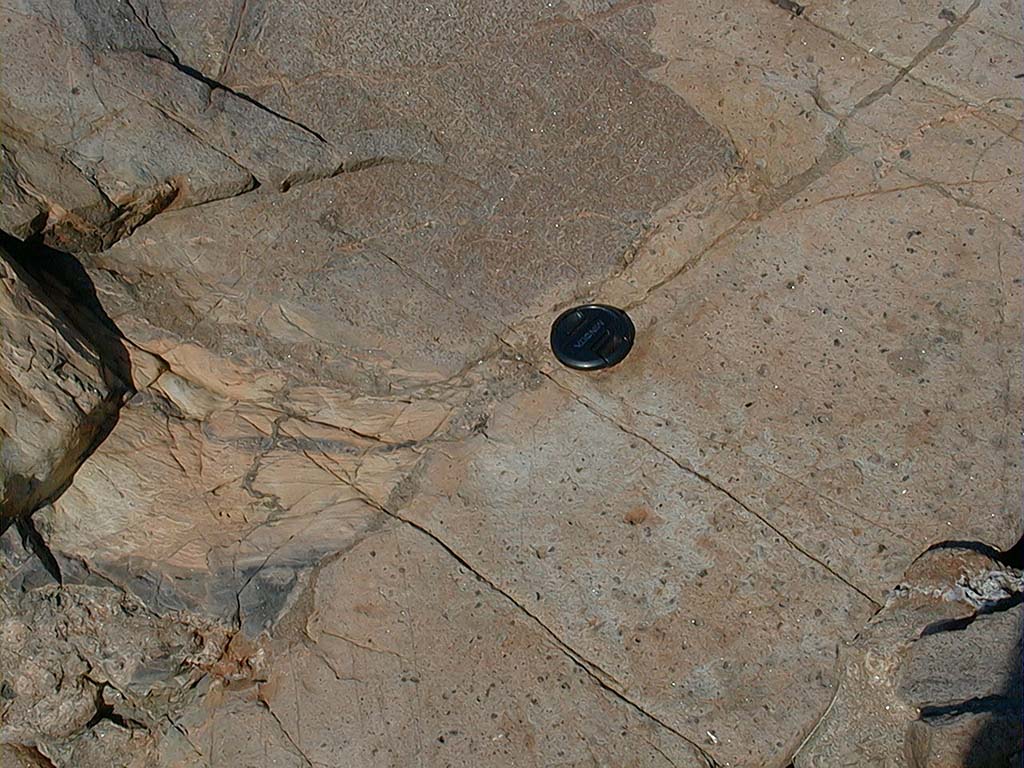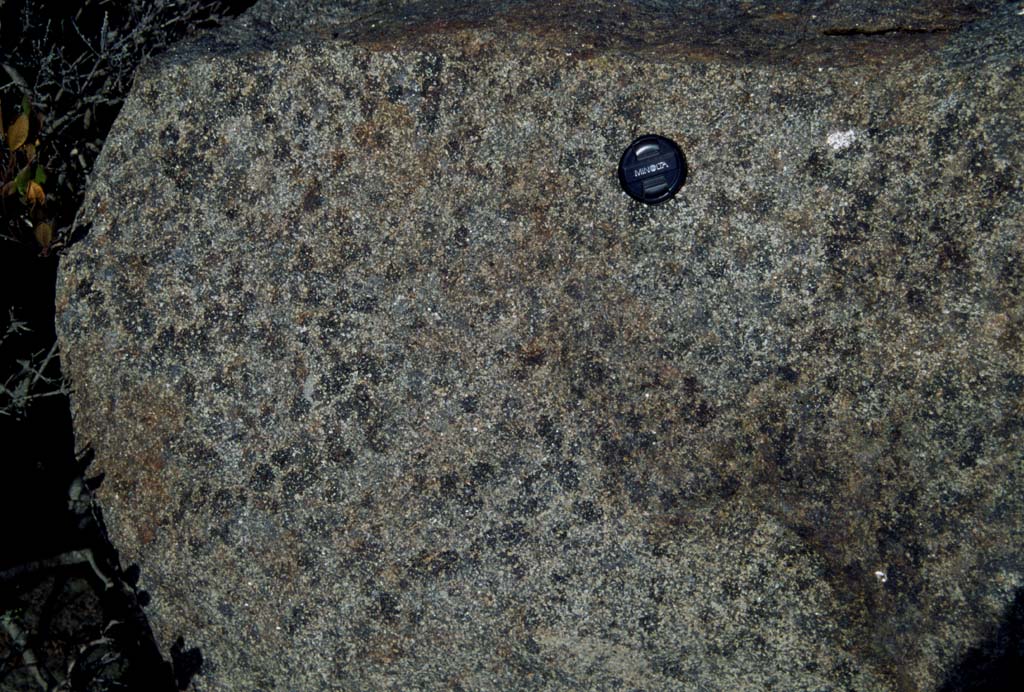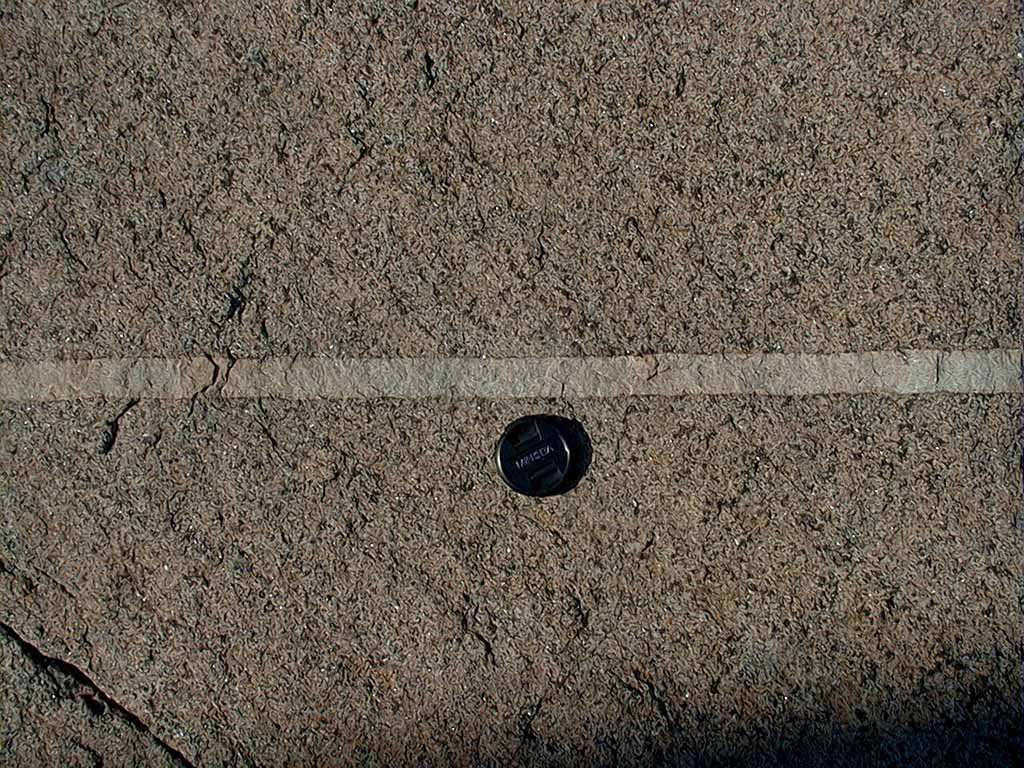IGNEOUS ROCKS AROUND Boston, MA
Pictures of a few remarkable outcrops of igneous rocks around Boston:
- magma mixing at Salem Neck
- the Rockport fayalite-pegmatite inside the Cape Ann granitic intrusion
- the Cape Neddick gabbroic intrusion
Magma mixing aT Salem Neck
All around the Salem Peninsula (North-West of Salem, MA), outcrops show magma mixing between the Beverly Syenite and the Salem Gabbro. Particularly good outcrops are exposed on the shore near the Cat Cove Marine Labs (ask permission at the lab), under powerlines crossing Memorial Drive and on the shore just south of the Salem Neck Park.
Close views of gabbroic pillows, showing their lobate contours. The shape of the contours in similar outcrops (from rounded to the development of finger-like intrusions of mafic magma inside the felsic magma) has been related to the viscosity ratio between the two magmas. The picture to the right shows chilled margins on the outside of the mafic pillows. Chilled margins are due to fast cooling of the hot mafic magma upon intrusion into the cold felsic magma.
|
Simultaneous intrusion of mafic and felsic magma in a dike crosscuting a previous generation of felsic magma.
How many magmas? Are they all intruding at the same time?
At least, not everything is intruding at the same time!! The most mafic (darker) magma is definitely older than the others and show nice brittle deformation. How about the parent magmas of the grey colored and the tan-colored rocks?
|
Rockport fayalite-pegmatites
The Cape-Ann granitic intrusion is a 450 Ma old alkali granite outcroping between Peabody, Ipswich and Gloucester (MA). The Cape Ann alkali granite is enriched in alkalis and iron, and accessory minerals include alkali amphiboles, iron-rich dark mica, and fayalite. The Fe2+ end-member of the dark micas, annite, has been defined here. On the northeastern shore of the cape, north of Rockport, pegmatite dikes exposed near the seashore contain large crystals of fayalite.
A pegmatite pod inside a fine-grained aplite. Crystals in pegmatites form at very low nucleation rates compared to growth rates, possibly as a consequence of abundant water in the melt, which depolymerizes the nuclei. This extremely low Nucleation/Growth ratio produces very big crystals. Fine-grained aplites are frequently associated with pegmatites, and may result from rapid loss of water, which would enhance nucleation and suddenly decrease the melting temperature of the magma. Dominant minerals in Rockport pegmatites are grey-blue quartz and yellow-pink alkali feldspar.
Parallel growth of quartz, alkali feldspar and a mafic mineral (fayalite, amphibole?) in a small pegmatite layer between two aplite layers. This comb structure is due to heterogeneous nucleation of the water-rich supersaturated pegmatitic melt on the cold aplitic wall. The lower aplitic body has thus crystallized before the intrusion of the pegmatitic magma. The pegmatitic crystals are crystallizing inside the upper aplite, indicating that this second aplite could result from the crystallization of the same magma that produces the pegmatitic layer, maybe as a consequence of rapid water-loss.
Large fayalite crystals are present in the pegmatites. Most of them have reacted to quartz + magnetite, as a consequence of changing oxygen fugacity during cooling of the pegmatite. This is a spectacular exemple of a natural FMQ buffer!!! The equilibrium fayalite = quartz + magnetite + oxygen (FMQ) is used by experimentalists to buffer the oxygen fugacity in high-temperature experiments (i.e. to control the amount of oxygen and the Fe3+/Fe2+ ratio in the experimental sample). In the pictures, fayalite is black and highly reflective, and is surrounded by a gray quartz+magnetite mix. The very thin dark layer around the crystals might be amphibole.
Cape Neddick layered gabbroic intrusion
The Cape Neddick Complex is an oval-shaped gabbroic intrusion covering about 1 km2 on the eastern side of the cape. It belongs to an alignment of young magmatic rock sometime considered to be the track of a "New England hot-spot". It has been dated at about 114 million years. The Cape Neddick complex consists of two gabbroic intrusions, an outer one rich in plagioclase, and an inner one richer in olivine. Nice igneous layering is exposed mostly in the outer intrusion.
|
Large scale igneous layering in the outer gabbroic intrusion. The rhythmic layering is underlined by variations in the proportions of plagioclase (light) and clinopyroxene (dark).
Spectacular cross-bedding in the outer gabbroic intrusion. These textures are probably produced by density currents in the magma chamber.
A channel got eroded in the lower massive gabbro, then filled with layered gabbro.
|
Parallel growth ("comb-structure") of amphibole crystals on top of a gabbroic layer. This is due to heterogeneous nucleation of a supersaturated magma on the cold crystallized wall of the magma chamber, the same phenomenon that happens in granitic magmas at Rockport. The right picture also shows nice erosion features.
On its western margin, the Cape Neddick Gabbro intrudes the metasedimentary rocks of the Kittery formation. Near the contact, a really fine grained gray-brown rock contains numerous enclaves of metasediments and gabbros.This fine grained rock might be the product of partial melting of the Kittery formation upon intrusion of the Cape Neddick gabbro.
|
The inner intrusion is made of olivine and amphibole-rich dark gabbros. Large amphibole crystals are poikillitic and enclose all other minerals, indicative of late crystallization.
Younger aplitic vein crosscuting the outer gabbro. A weak igneous layering can be seen in the gabbro, at about 30° from the direction of the dike.
|
Proudly powered by Weebly
